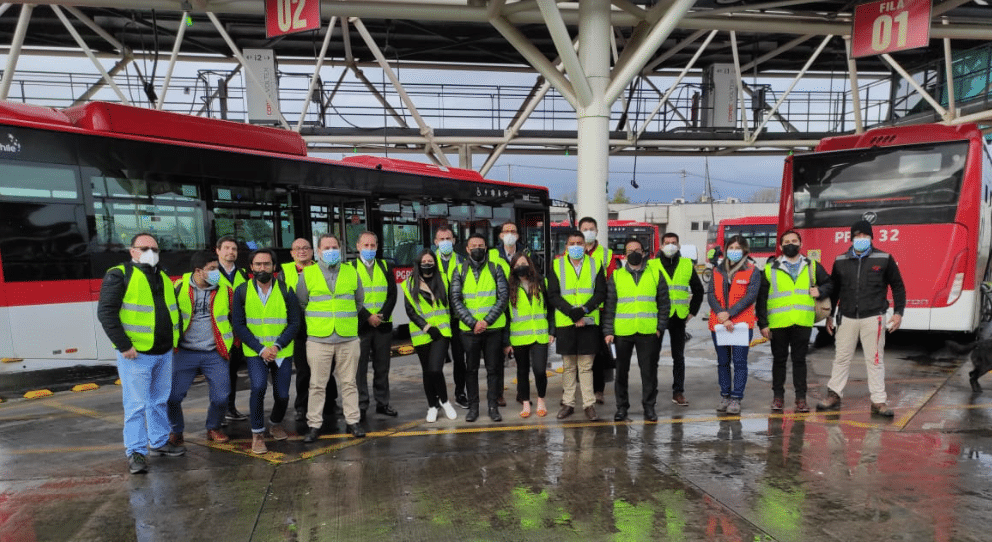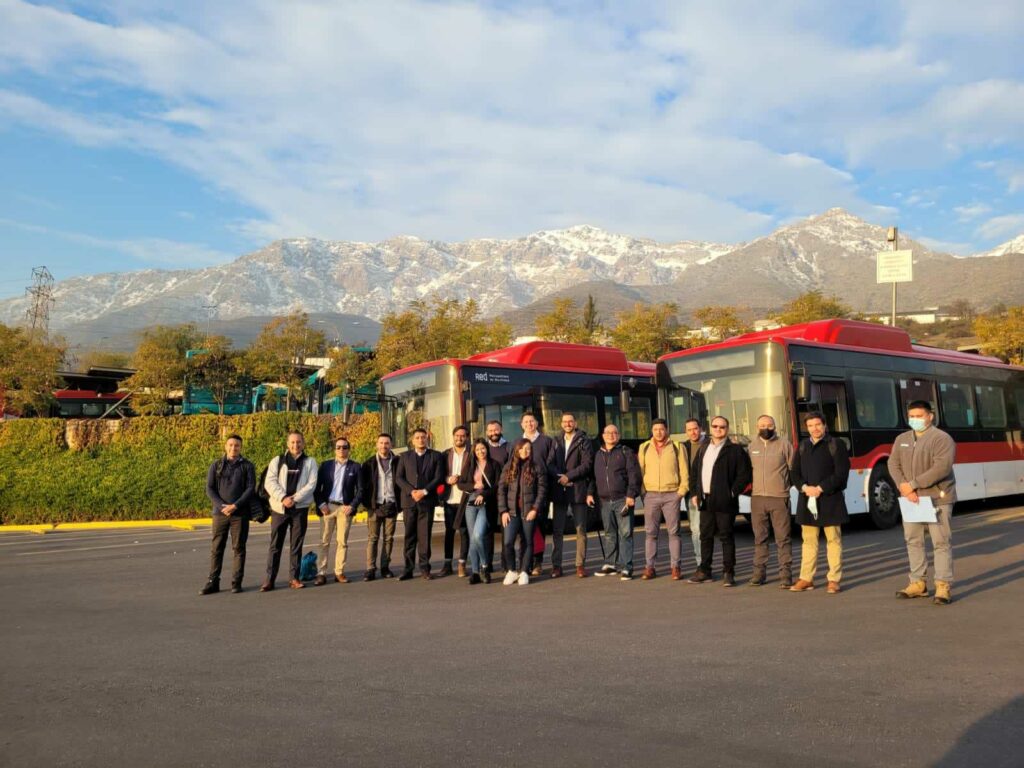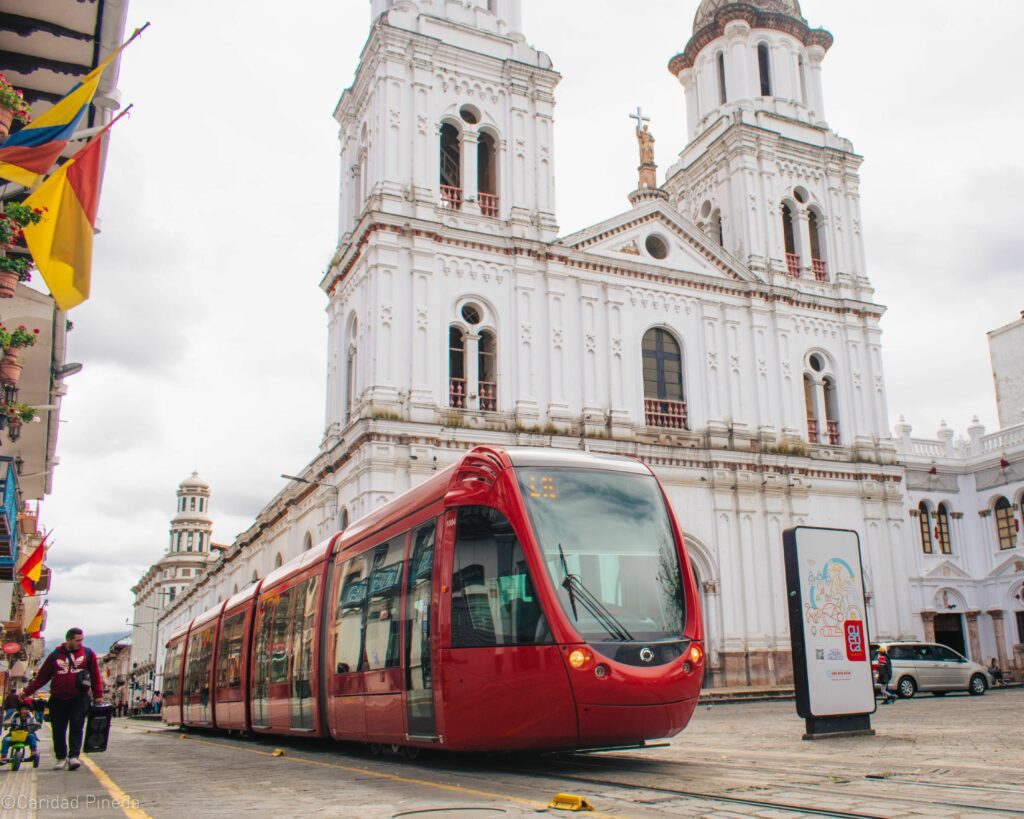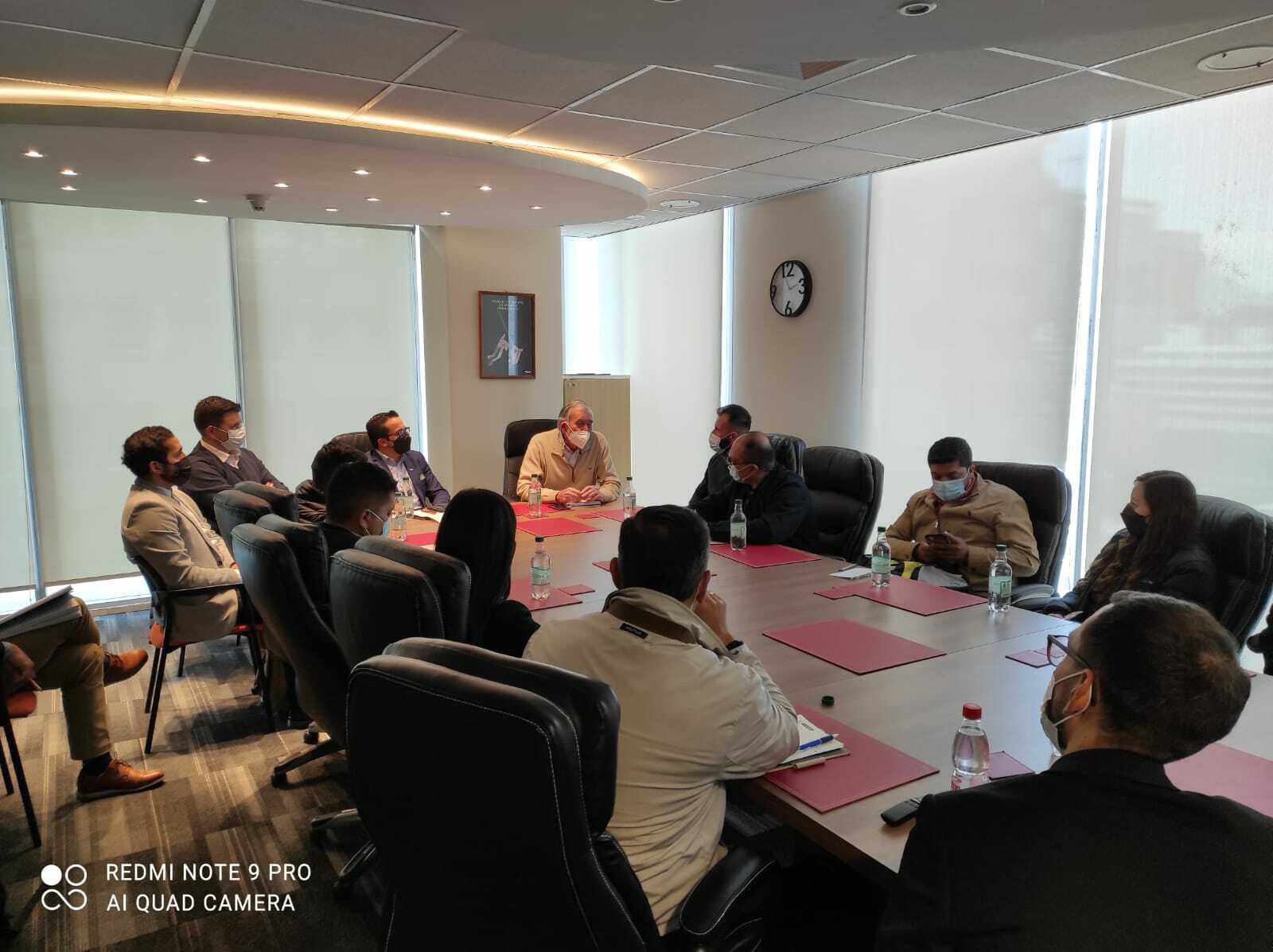By Karla Hernández, Adrian Ortega and Victor Valente
Aiming to learn from one of the Latin American cities that has seen greater advancements in electric mobility recently, TUMI coordinated a technical trip to Santiago, Chile with the support of Moving Chile and CitiesForum. The delegation of 11 representatives came from the city of Cuenca and ministries of Ecuador who are responsible of developing Cuenca´s E-Mobility plan.
“We are supporting Cuenca’s journey on designing its own path towards e-mobility,” said Victor Valente, Senior Technical Advisor from TUMI. “Both Bogotá and Santiago, two major cities in Latin America, have taken big steps to enhance and promote sustainable mobility. Their example shows the task is not impossible, though we are fully aware that one recipe does not fit all. Cuenca has to evaluate what serves their city best.”
To that end, members of the delegation shared their thoughts from the trip to Chile. Andrea Bedón, delegate from the Ecuadorian Ministry of Environment and Ecologic Transition said, “The exchange gave the delegation insight into the work Chile has developed. Looking at it from the perspective of multiple stakeholders, their lessons learned can now be considered in Cuenca’s own transition towards e-mobility.”.
Kathy Latorre, from the Public Mobility Company (EMOV), said that visiting the operators and the Santiago transit authority allowed the delegation to understand the practical processes of introducing an electric vehicle fleet. “The visit allowed us to reflect upon embracing e-mobility, understanding the advantages and main challenges faced in Santiago.”

(C) Eduardo Andrade
Chile has been a pioneer in the use of e-buses in Latin America. As a country, we have done an important job with our quick advancement — deploying the technology that allows us to reduce emissions in just five years. Most importantly, we have generated more comfortable trips for users. This change has created cities with greater territorial equity.”
What they saw: E-mobility in Santiago
Since 2007, the city of Santiago has been investing in the improvement of its public transportation. By 2017, the city had new metro lines (covering nearly 119 km) placed into service and massively revamped its bus fleet by adding more efficient buses. The city has also worked on modernizing logistics and introducing electric buses.
Paola Tapia, the Public Metropolitan Transport Director and Chile’s former transport minister believes electromobility is a central axis for improving transport services in Santiago. “Chile has been a pioneer in the use of e-buses in Latin America. As a country, we have done an important job with our quick advancement — deploying the technology that allows us to reduce emissions in just five years. Most importantly, we have generated more comfortable trips for users. This change has created cities with greater territorial equity.”
Ms. Tapia also believes that Chile’s (e-mobility) outcomes can encourage other cities from the region to decarbonize their fleets. “We facilitated visits to electro terminals and spaces dedicated to fleet management for the delegation, as we are interested in promoting this clean energy in public transport and using those collaborative spaces to share the path we have been building.”

(C) Eduardo Andrade
4 actions that facilitated e-mobility transition in Santiago
Some relevant measures that have facilitated Chile’s road to e-mobility are:
- Long-term planning: public policy instruments to advance Chile’s e-transition have been developed and are currently in place, such as the National E-Mobility Strategy and the Energy Efficiency Law. Chile expects to have 100 percent e-bus usage by 2040 and by 2050, 100 percent of taxis will be electric. Working together with the private sector has been an imperative, as public transport is operated by private companies.
- Investment in new technologies: the country is betting on electric mobility at a public and private level but they are also planning to supply the energy demand with green hydrogen. As Chile depends highly on the imports of fossil fuel for the transport sector, investing in renewable energy and energy efficient measures is key to a successful e-transition.
- Synergy with the private sector: the private sector has played a key role in the overall rollout of e-vehicles. Independent bus operators have taken the first steps, bringing the first e-buses to the city. After testing and adapting the technology, the government was able to support the creation of a business models capable of scaling up and accelerating the e-mobility transition in a sustainable manner over the long-term.
- Including taxi fleets and taxi companies as a key part of the transition process: While in some countries, taxi and private passenger-carrier companies are left out of public fleet plans, Santiago made an extra effort to make sure the replacement by electric vehicles was feasible. The Program Mi Taxi Eléctrico , led by the Ministry of Transport and the Energy Sustainability Agency, is divided in two phases. The first phase has already been implemented (50 e-taxis). The second phase is expected to start soon and will incorporate 180 new e-vehicles as well as fast charging infrastructure in over a dozen cities.

Parking lot, Metbus Chile
Learnings from Bogotá and Medellín
Prior to the visit in Santiago, another delegation of those responsible for the development of Cuenca’s e-mobility plan had traveled to Bogotá and Medellín to learn from the mobility transitions those cities underwent.
In Bogotá, the delegates were able to look more closely at the implementation of e-buses (Transmilenio) and e-bikes in the bike sharing system as well as last mile logistic projects (Bicipublica and BiciCarga respectively). The group from Cuenca later presented its experience during the LATAM Mobility SUMMIT in Medellín. This visit was complemented by activities on Metro de Medellín and the Área Metropolitana de Aburrá. You can read all about this technical trip here.

Transmilenio (c) GIZ Colombia
Cuenca bets on sustainable mobility to face climate change related impacts
Cuenca is facing many of the same mobility problems other cities of its size are, from poor air quality to road accidents to traffic jams. Mobility challenges in Cuenca (and in Ecuador more broadly) have increased in recent years; this, along with the rising prices of fossil fuels, poses a mobility challenge.
The city has been promoting cleaner, more sustainable, and socially inclusive means of transportation for over a decade already. Electric mobility represents itself as a great opportunity for the city to shift from fossil fuel consumption and bet on more sustainable ways to meet people transportation needs.
Today, the city authorities are working with different institutions and actors from the transport and energy sector to develop Cuenca’s Electric Mobility Plan. This taskforce is formed by experts from the Municipality of Cuenca, Cuenca’s Tram Company, The Public Mobility Company (EMOV), the Directorate for Mobility Management, the academia represented by the Universidad Politécnica Salesiana, Universidad del Azuay, Universidad de Cuenca y Universidad Católica, Centro Sur, the city’s energy provider and the Ministries of Transport, Energy and Environment as well as representatives of the private sector such as providers of e-vehicles, e-bikes, scooters, etc.
So far, the city of Cuenca has implemented several changes that serve as milestones to the mobility transition. Back in 2020, pop-up and emergency bike lanes were introduced to promote urban cycling in response to the mobility restraints imposed by Covid-19 contingency measures. By 2022, the city implemented a 13.5 km segregated bikeway corridor, financed through a loan obtained from the Banco de Desarrollo del Ecuador.
The city has also invested in mass transportation to reduce traffic congestion: by 2020, Cuenca had inaugurated the first tram system in Ecuador, with 27 stations and covering 20.4 km. Nowadays, the city is working on the implementation of its first e-bus fleet with financial support from KfW.

Tranvia (c) GIZ Ecuador
“Both Bogotá and Santiago, two major cities in Latin America, have taken big steps to enhance and promote sustainable mobility. Their example shows the task is not impossible, though we are fully aware that one recipe does not fit all. Cuenca has to evaluate what serves their city best.”
Next steps
The technical visits will help the group working on electric mobility to agree on a mutual vision and the measures that will be part of Cuenca’s e-mobility plan.
As part of the project supported by TUMI, the city is currently working on four pilots to evaluate the potential for e-mobility implementation in different use cases: buses, taxis, bikes, and last mile logistics. The technical trips have given the city greater insights for consideration and explored potential options for inclusion in the pilot implementations and their scaling up.
These technical trips were possible with the support of TUMI, an initiative implemented by the Deutsche Gesellschaft für Internationale Zusammenarbeit (GIZ) on behalf of the Ministry for Economic Cooperation and Development (BMZ).
